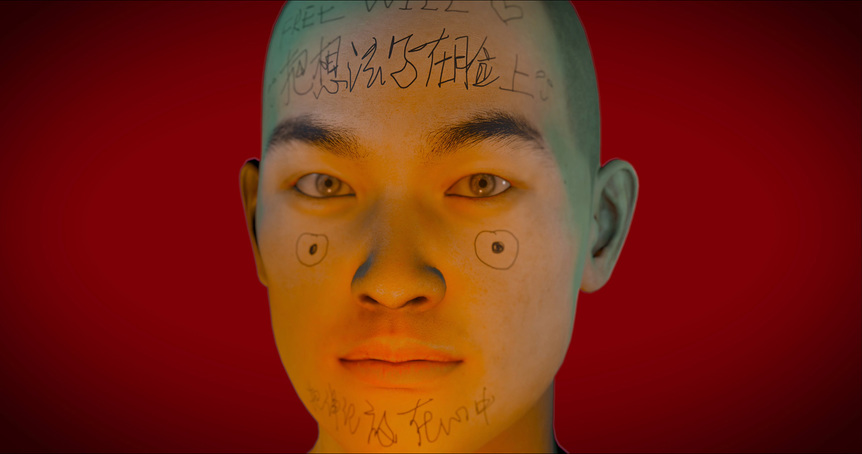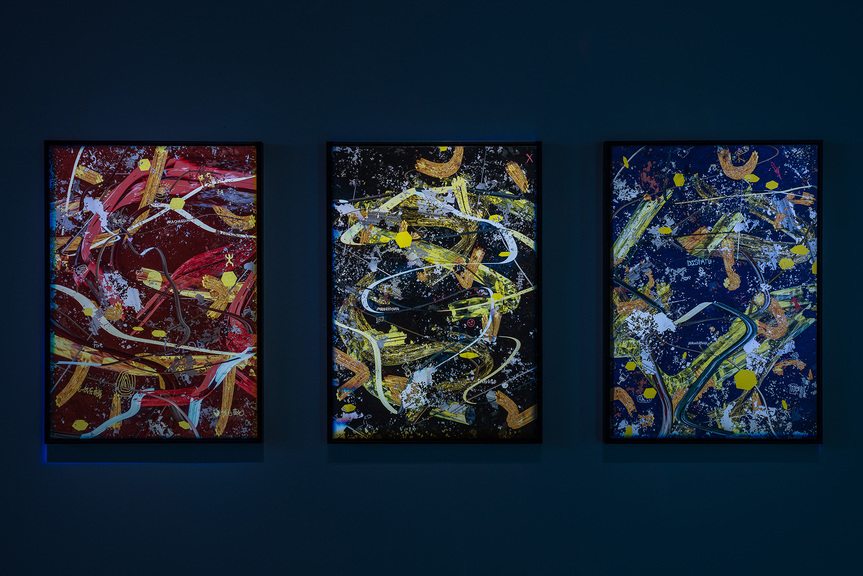-
From Current Issue
-
- Editor’s Letter Fire in the Heart
- Reviews I Gusti Ayu Kadek Murniasih
- Reviews 11th Seoul Mediacity Biennale: “One Escape at a Time”
- Dispatch Networked China
- One on One Monira Al Qadiri on Yukio Mishima
- Essays The rise of independent art spaces in pandemic-era Shanghai
- Features Tuan Andrew Nguyen
- Table of Contents
- Web Exclusives
- Archive
- Subscribe

R
E
V N
E
X
T
Installation view of Mao Haonan and Hsiung Cheng-Kai’s “Continuous Terminus,” at ShanghArt M50, Shanghai, 2018. Photo Alex Wang. Courtesy ShanghArt Gallery, Shanghai / Beijing / Singapore.
ShanghArt’s space in the M50 Art District—one of the gallery’s older locations before the opening of its new, bespoke space in the West Bund art district—has focused on presenting young and emerging artists since December 2017 as part of its experimental Carte Blanche program, in which the artists get a free hand to present work as they please. Call it a testing ground, or incubator, for the grown-up gallery across town. To this end, the presentations have so far this year been a mixed bag—some hits, some misses. “Continuous Terminus,” the double-solo of Mao Haonan and Hsiung Cheng-Kai, is one of those rare spectacles, encompassing elements of both.
The core of the exhibition consists of two major video works, one by each artist. Mao’s Action, Almost Unable to Think (all works 2018) presented a video-game rendition of a Gulf War-style movie, a narrative about a soldier who dies in a series of explosions while attempting to greet civilians. The soldier is a virtual character, purchased from a 3D model website, and literally designed to die in such circumstances, again and again. Invited to inhabit the character and therefore experience his journey through the predominant use of first-person-shooter style perspective, one undergoes an emotional and successful transition from viewer to participant, which reminded one of the potency of cinema. Mao’s work had a certain Apocalypse Now (1979) sensibility, and for a fictional narrative about a video game character, it was strangely beautiful and emotive. Scenes of environmental carnage reminded one of the burning oil fields in such war films as Sam Mendes’ Jarhead (2005) or David O. Russell’s Three Kings (1999). The images of war and environmental disaster were accompanied by a narrated sort of stream-of-consciousness poetry, the effect akin to Arthur Rimbaud’s A Season in Hell (1873), unsettling and centring. Mao is undoubtedly a young artist to watch; not only does he understand emotional resonance, but he is also adept in both technology and narrative.
Hsiung’s main work, Absence Reflection, consisted of three screens suspended facing one another in the center of the gallery space, each showing a galactic vision akin to moving images from the Hubble Space Telescope, which is created in real time by a set of algorithms. The artist has referred to this as an infinite creation, a work that creates itself moment by moment, with infinite possibility. The idea itself is fascinating, but also exemplifies some of the problems with digital art—while the idea and orchestration are interesting, the outcome is fundamentally no more compelling than watching a screen saver. While the concept of autonomous AI created artworks has obvious potential, it is still in its infancy. Ultimately, watching a digital work unfold without human intervention seems like a technical exercise; it may be groundbreaking, but one is left asking, “Why should I care?”
Apart from the video works, the periphery of the space was hung with digital images and inkjet prints. Some of these were stills lifted straight from the videos, while others were zoomed-in details to the size of only a few pixels, so that the former felt repetitive while the latter seemed aesthetically disconnected from their source. What purpose these served, except to include conventional picture-on-wall exhibition content, was unclear, and seemed to reinforce the suggestion that traditional galleries continue to struggle with how to monetize digital media.
What ShanghArt M50 is attempting, by marrying a highly commercial space with the artist-led ethos, is of interest, but it perhaps elucidates a particular absence within China of a history and tradition of young artists experimenting within artist-run spaces before moving into the dealer system. The danger here is that such an esteemed gallery as ShanghArt filling that void inherently signals to the marketplace that certain untested artists warrant being collected.
Both the exhibition and the ShanghArt model may, in future, be seen as an interim solution between bricks-and-mortar and digital; I doubt, however, that it serves to bridge the gap between free-acting agents still finding their voice, and a timely—and earned—entry into the collector’s arena.
Mao Haonan and Hsiung Cheng-Kai’s “Continuous Terminus” is on view at ShanghArt M50 until October 7, 2018.
To read more of ArtAsiaPacific’s articles, visit our Digital Library.






